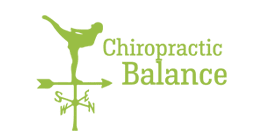Sleep Posture
Ideally we spend about a third of our life sleeping and it is where we do the majority of our healing and rejuvenation. Therefore it’s essential to ensure we get our sleeping posture correct.
When sleeping we need to aim to keep our spine balanced:
Front Sleepers
∙ Avoid this posture as it requires your neck to be rotated and can lead to imbalances in the spine.
Back Sleepers
∙This is the ideal position (as long as you don’t snore!) as your body is in good alignment.
∙Back sleepers are best having a small pillow under their head which supports the natural curve of the neck without pushing it forward. You want your ear to be in line with your shoulder on a horizontal plane. If you are not sure if your head is propping up get a family member or friend to take a photo of you so you can determine whether your pillow is the right height for you.
∙Back sleepers also often benefit from having a firm pillow under the knees. The pillow under the knees will take pressure off of your low back allowing your spine to assume its natural curves without stress.
Side Sleepers
∙ This is the most common sleeping position throughout the night, and it is still good for keeping your spine in alignment. If you snore on your back, shifting to your side generally quiets you down.
∙ Side sleepers do best with a pillow that is the width of their shoulders, to keep your neck in a straight line with the rest of your body. (Again get a family member or friend to take a photo so you can assess this). Two pillows or a pillow that is too wide can tilt your head and lead to neck stiffness in the morning.
∙ Side sleepers often also benefit from having a firm pillow between the knees to keep the hips and low back balanced.
Standing Posture
Most of us know that standing is better for our back than sitting, therefore it is becoming more common for workplaces to offer stand-up desks. However at Chiropractic Balance we often find that people have never been shown what ideal standing posture is and their best efforts to ‘sit-less’ may be causing more damage than good.
1. Start with your feet
Imagine your foot is approximately rectangle, and there is a point near each corner (big toe, little toe, outside heel & inside heel). These four points should be evenly weighted giving you a centered and balanced base of support.
- Most common imbalance: Greater weight on the heel, especially the outside (look at the wear on your shoes)
- Correction: Lean forward slightly, ensuring that there is weight in your big toe. When you lift your big toe you will slightly lose balance if doing correctly.
2. Switch on your stomach muscles
The muscles that wrap around your lower back and abdomen are called your core. When you switch on your core it generally adjusts the curves in your low back and adds stability similar to the concept of a wearing a corset or scaffolding around a building.
- Most common imbalance: Poor core strength leading to the abdomen sagging forward and the bottom sticking out. This increases the pressure on your joints in your low back (sway back).
- Correction: Tighten your abdominal muscles and tuck your bottom under slightly.
3. Lift your breast bone
The centre of your breast bone or sternum (about 4cm down from the notch at the bottom of your neck between your collar bone) should be the most anterior or forward part of your body when standing.
- Most common imbalance: Sunken breast bone and rounded shoulders.
- Correction: Imagine there is a fishing line attached to your breast bone, pulling it up toward the sky. Breathe in and feel the centre of your breast bone lift. This should automatically bring your shoulders back in good alignment. As you breathe out, maintain breast bone position while letting your arms drop (to relieve shoulder tension).
4. Lift your head upwards
The ear should be in line with the shoulder when looking at the body from the side. Also the eyes should be balanced when looking at the body from the front.
- Most common imbalance: The chin poking forward causing the ear to be in front of the shoulder. This puts extra strain on your neck and upper back joints.
- Correction: Imagine a string attached to the top of your head that is pulling you toward the ceiling. Your neck and head should be straight and upright. Another way to achieve this is to tuck your chin slightly.
Standing with poor posture can be taxing on your body in many ways
- Increase strain on vertebrae, ligaments, discs and muscles
- Limited body range of movement
- Affecting circulation
- These factors can lead to early deterioration of vertebrae, pain, increased injury and quicker fatigue


